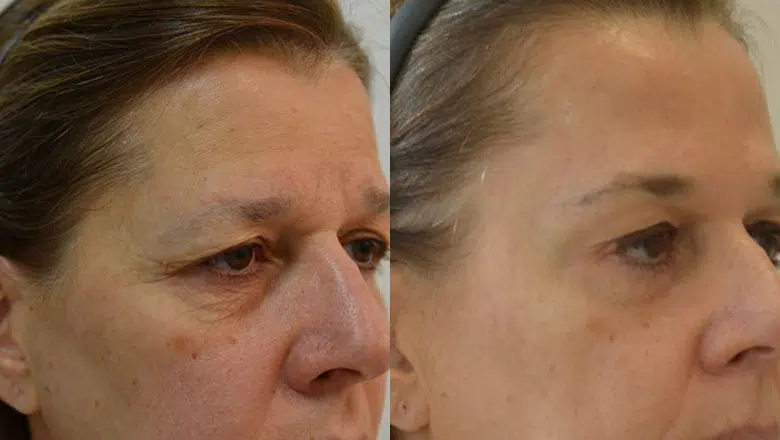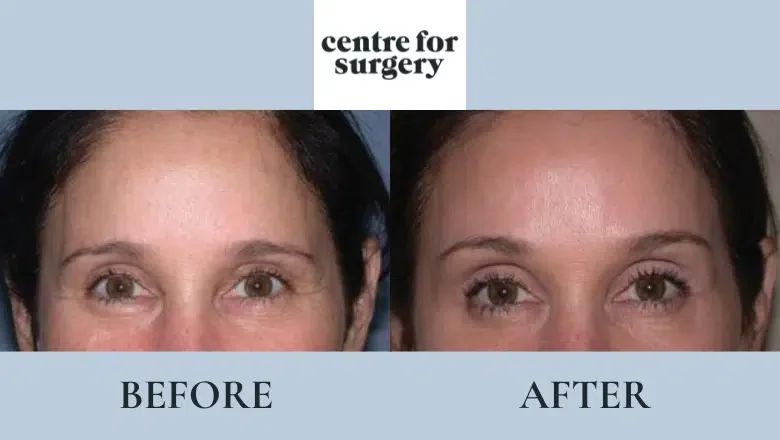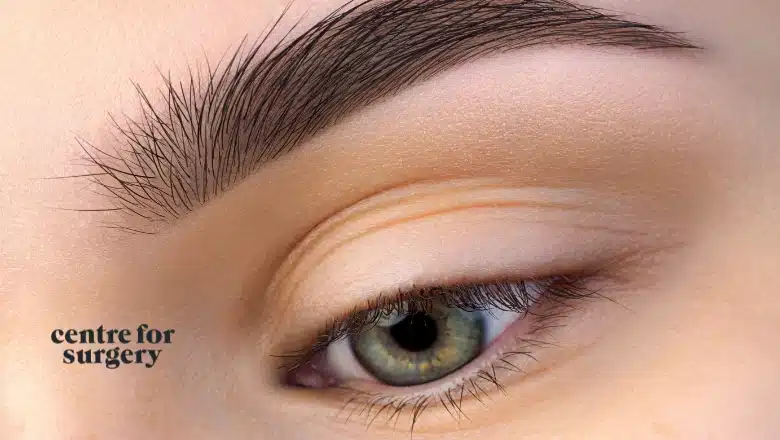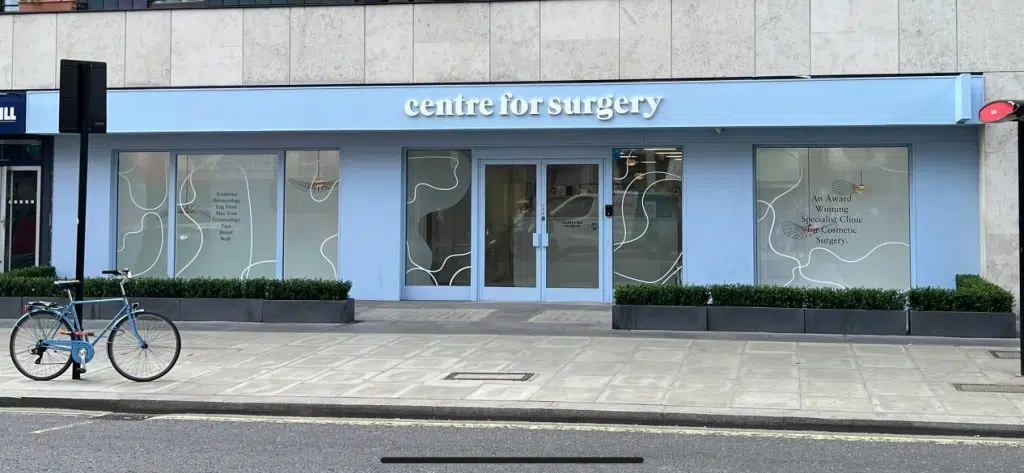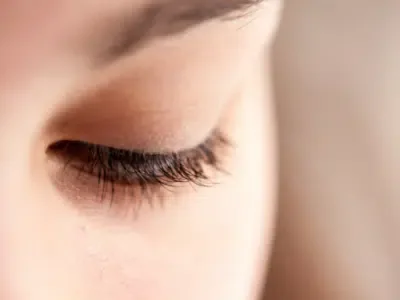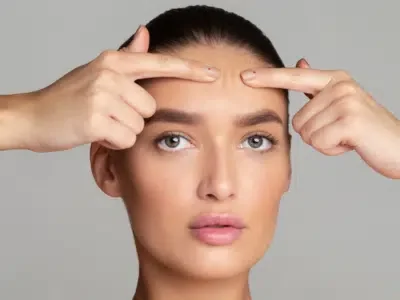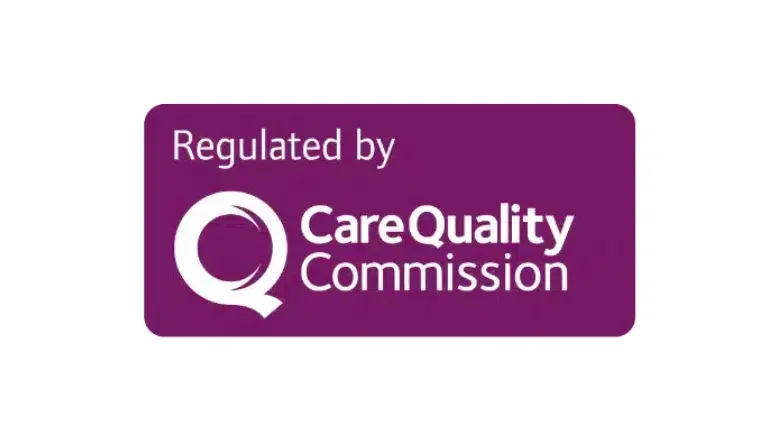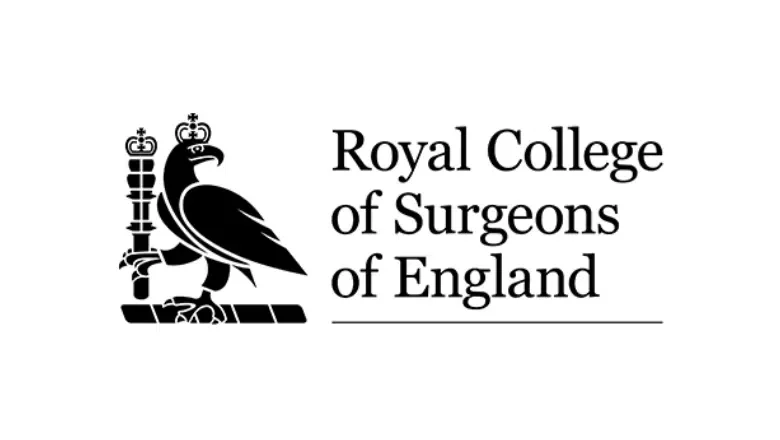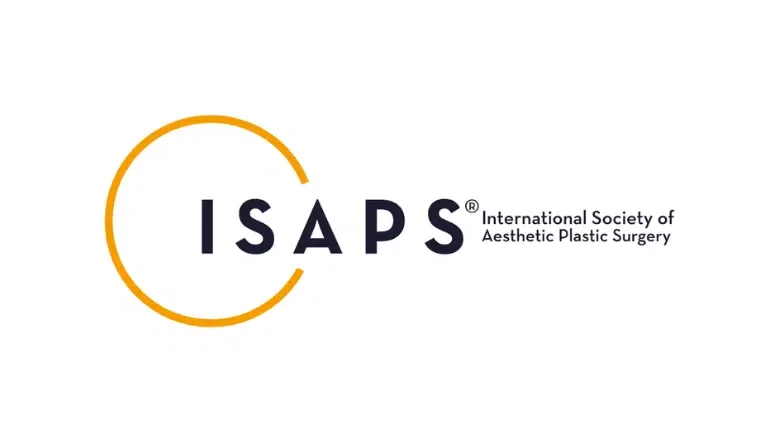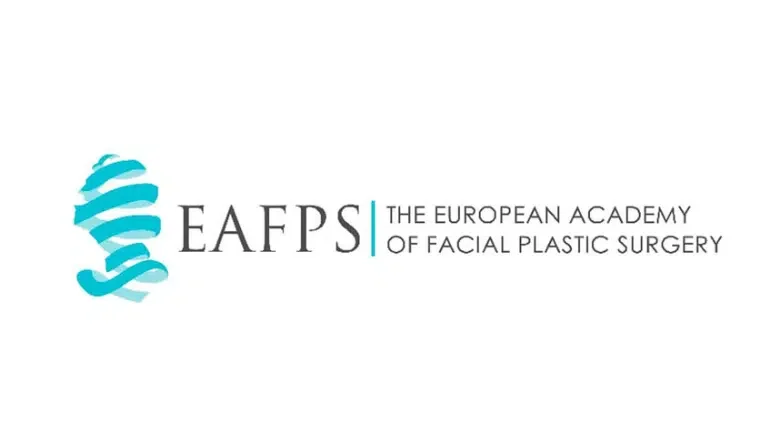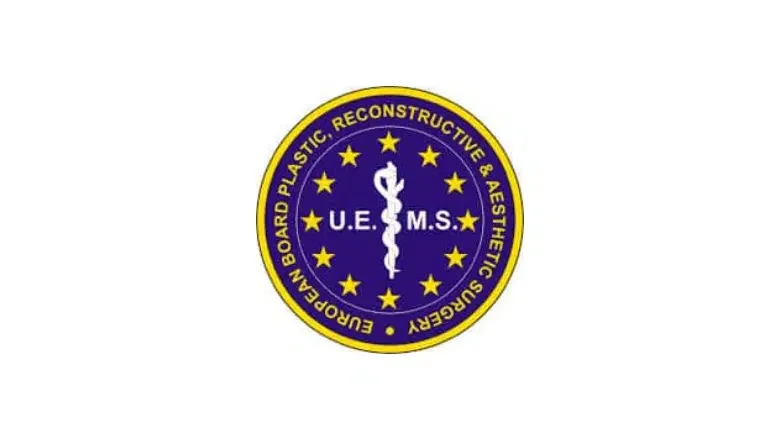Brow Lift in London
A brow lift surgery can help you look rejuvenated and refreshed
A brow lift, also known as a forehead lift, is a cosmetic surgical procedure that is designed to improve the appearance of the forehead and eyebrows. The procedure is typically performed on individuals who are experiencing wrinkles, lines, sagging or drooping eyebrows, and hooding of the upper eyelids, which can make a person look tired, sad, or older. A brow lift can help to create a more youthful and refreshed appearance by smoothing out wrinkles and lines, elevating the eyebrows, and opening up the eyes.
RELATED: How to Fix Drooping Eyebrow
What is a brow lift, and what does it involve?
A brow lift, also known as an upper facelift, is a cosmetic facial rejuvenation procedure that lifts the eyebrows and tightens the forehead and skin around the eyes. This procedure targets the upper third of the face, from the corner of the eyes upward to the frontal hairline.
As we age, the eyebrows tend to droop, and the skin loses elasticity, resulting in a tired or angry appearance. A brow lift can reverse these signs of ageing by tightening the forehead and pulling the eyebrows up. There are several types of brow lift procedures available, and the optimal procedure for each patient depends on their individual needs and desired results.
Brow lift procedures are typically performed as a day case with minimal scarring, faster recovery time, and fewer side effects. Surgeons at Centre for Surgery in London can help patients choose the optimal type of forehead lift for their needs and desired results.
The procedure can be performed using several different techniques, such as the traditional technique, the endoscopic technique or the temporal brow lift. The traditional technique involves making an incision along the hairline, lifting and repositioning the forehead skin, and removing any excess skin. The endoscopic technique involves making several small incisions in the hairline and using a small camera called an endoscope to guide the surgery. The minimal incision technique involves making small incisions in the hairline and using specialised instruments to lift the skin.
RELATED: Brow Lift vs Blepharoplasty – Which One Is Right For Me?
Brow Lift Before & After
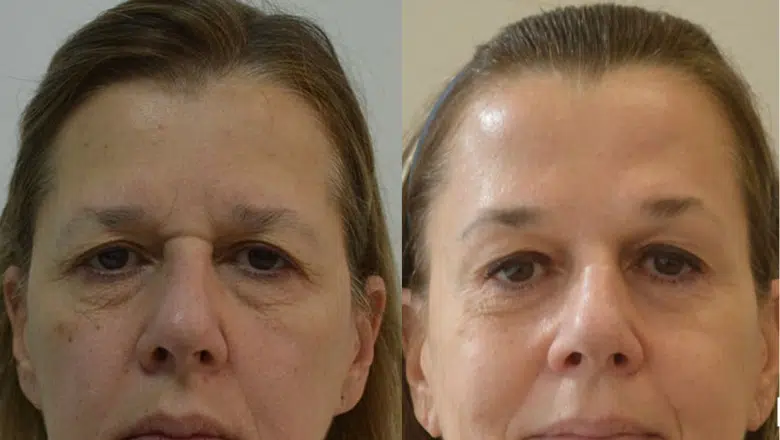
Signs of ageing in the upper face
As we age, the upper face can show various signs of ageing. Some of the most common signs include:
Wrinkles and fine lines
As the skin loses elasticity and collagen, wrinkles and fine lines can form on the forehead, between the eyebrows, and around the eyes.
Sagging skin
The skin on the upper face can lose firmness and begin to sag, which can cause drooping of the eyebrows and eyelids.
Hollow cheeks
With age, the cheeks can become hollow and sunken due to a loss of volume in the face.
Age spots
Sun exposure can cause age spots to appear on the upper face, particularly on the forehead and around the eyes.
Loss of eyelashes
As we age, the eyelashes can become thinner and less visible.
Forehead lines
Due to the constant movement of forehead muscles, wrinkles appear on the forehead.
Marionette lines
Wrinkles that run down from the corners of the mouth to the jawline.
Crow’s feet
Wrinkles that appear on the outer corners of the eyes.
To slow the signs of ageing on the upper face, it is recommended to protect the skin from the sun, maintain a healthy lifestyle, and consider skincare treatments such as facials, anti-wrinkle injections and fillers.
RELATED: Eyelid Rejuvenation Options – Solutions for Younger-Looking Eyes
What conditions can a brow lift target?
A brow lift can target a variety of aesthetic concerns in the upper portion of the face. The procedure aims to improve the appearance of the forehead, brow, and upper eyelids. Some of the most common conditions that a brow lift can target include the following:
Lines and Wrinkles
As we age, wrinkles and lines can form on the forehead due to the contraction of the muscles that control facial expressions. A brow lift can smooth out these wrinkles and lines, giving the forehead a more youthful appearance.
Drooping eyebrows
Over time, the skin and muscles in the forehead can lose elasticity and tone, causing the eyebrows to droop. A brow lift can reposition the eyebrows to a more youthful, elevated position.
Hooded eyelids
The skin on the upper eyelids can become loose and saggy, creating a hooded appearance that can make a person look tired or older. A brow lift can remove the excess skin, resulting in a more open and alert appearance.
Frown lines
The wrinkles that form between the eyebrows can give the appearance of a permanent frown. A brow lift can smooth out these lines, giving the face a more relaxed and neutral expression.
Forehead asymmetry
Certain individuals may have an asymmetrical forehead, where one side may be lower than the other. A brow lift can help to balance out the forehead, creating a more symmetrical appearance.
RELATED: Benefits of Brow Lift Surgery
Am I suitable?
The procedure is typically performed on people who have wrinkles and sagging skin in these areas, as well as those with drooping eyebrows.
To determine if you are a suitable candidate for a forehead lift, a consultation with a plastic surgeon or facial plastic surgeon at Centre for Surgery is necessary. They will consider your medical history, current health, and cosmetic goals. They will also examine your skin, bone structure, and muscle tone in the forehead and brow area.
If you are in good general health, have realistic expectations for the outcome of the surgery, and have specific cosmetic concerns that a forehead lift can address, you may be a good candidate for the procedure. However, if you have certain medical conditions that may increase the risk of complications, such as high blood pressure or a bleeding disorder, a forehead lift may not be recommended.
Types of Brow Lift
Traditional Open Brow Lift:
The conventional technique for lifting the eyebrows and forehead is called the open or coronal browlift, but it is not as commonly used nowadays due to newer alternatives, such as the endoscopic brow lift, which are preferred by surgeons.
The open browlift requires a large incision along the frontal hairline that runs from ear to ear. Through this incision, the surgeon elevates the deep forehead muscles and tissues and secures them in place using sutures. Next, they pull the forehead skin tightly to smoothen out wrinkles and lines. Finally, any excess skin is removed, and the wound is sutured along the hairline.
However, plastic surgeons have replaced the traditional brow lift with newer techniques due to some disadvantages, including nerve injury, scalp numbness, hairline displacement, and destruction of hair follicles along the incision. For this reason, most surgeons now prefer to perform the endoscopic brow lift, which is less invasive and results in less scarring. Nevertheless, the traditional brow lift remains an excellent option for some patients with advanced signs of ageing.
Endoscopic Brow Lift:
An endoscopic brow lift is a minimally invasive procedure that utilises a thin tube with a camera attached to it, called an endoscope, to lift the brow. It involves making small incisions in the scalp and lifting the skin and underlying tissues. This method results in less scarring and quicker recovery compared to traditional brow lift procedures.
Temporal Brow Lift:
A temporal brow lift focuses on the outer portion of the brow, specifically the temples. This procedure is used for patients with drooping or hooding of the outer brow or those with wrinkles or lines in the temporal area. Incisions are typically made in the hairline near the temples, and the skin and underlying tissues are lifted to produce a more youthful appearance.
Transpalpebral Brow Lift – Mini Brow Lift:
A minimal incision brow lift involves making small incisions behind the hairline rather than a longer incision in the scalp. This method lifts the skin and underlying tissues, resulting in a more youthful appearance of the brow. The recovery time is quicker, and scarring is minimal compared to the traditional open brow lift.
The recommended type of brow lift procedure will depend on a patient’s individual needs, anatomy, and goals. A specialist plastic surgeon can help determine which method will best achieve the desired outcome.
Brow lift procedure
A brow lift, also known as a forehead lift, is a surgical procedure that improves the appearance of the forehead, brow, and upper eyelids. It is typically performed under general anaesthesia and can take one to two hours, depending on the specific technique used.
Here are the general steps of the surgical procedure for a brow lift:
Anaesthesia
Before the procedure begins, the patient will be given either general anaesthesia or IV sedation to ensure a comfortable and pain-free experience.
Incision
The surgeon will make an incision on the scalp, typically in the hairline, where it can be easily hidden. There are different techniques for making the incision. One is a coronal incision, which is made across the top of the scalp; another is an endoscopic incision, which involves making a few small incisions along the hairline and using a small camera to visualise the underlying tissues.
Repositioning of tissues
The surgeon will then lift and reposition the skin, muscle, and other tissues of the forehead, brow, and upper eyelids. This can involve removing excess skin, tightening the muscles and repositioning the eyebrows to a more youthful, elevated position.
Closure of incision
After the repositioning is complete, the incision will be closed using sutures, staples or surgical glue.
Recovery
After the procedure, the patient will be given medication to help manage pain, swelling, and bruising. The patient must keep the head elevated and avoid strenuous activities for at least a week. The patient should expect some swelling and bruising to last for several weeks.
Recovery after Brow Lift Surgery
You can leave the clinic on the same day as your eyebrow lift procedure once the anaesthetic effects have worn off.
You will have dressings applied to the forehead and may have two small drains, which will help to remove any excess fluid. These will be removed after the first two days. You mustn’t get the dressing wet to avoid moisture getting into the wound and potentially delaying wound healing. One of our postoperative nurses will remove any stitches that are not dissolvable after four to seven days.
Pain Management
Pain is usually minimal after a brow lift procedure and can be managed with over-the-counter or prescription pain medication from the surgeon. It is important to take the medication as directed and not to drive or operate heavy machinery until the medication’s effects have worn off.
Swelling and Bruising
Swelling and bruising are common after a brow lift procedure and typically resolve within 7 to 10 days. Ice packs and elevation of the head can help reduce swelling and discomfort.
Wound Care
The incisions from a brow lift procedure will be closed with sutures or surgical staples. The surgeon will provide instructions on how to care for the incisions, which may include cleaning the area, avoiding certain activities, and wearing a headband or similar dressing to protect the incisions.
Activity Restrictions
Patients should avoid strenuous activity and heavy lifting for at least one to two weeks after the procedure to reduce the risk of complications and allow proper healing. Light activity and work can typically be resumed within one week, but more strenuous activity should be avoided for several weeks.
Follow-up Visits
The surgeon will schedule follow-up visits to monitor the healing process and make sure the incisions are healing properly. Any concerns or problems should be reported to the surgeon during these visits.
Final Results
The final results of a brow lift procedure will become apparent once the swelling and bruising have resolved, typically within a few weeks to several months. The results of a brow lift are long-lasting, but the ageing process will continue and may result in some subtle changes over time.
You will have to wear a compression garment to help reduce swelling. Ensure that you avoid any strenuous exercise and heavy lifting for three weeks following the brow lift. You may need to take up to one week off work. However, this will vary from person to person.
Risks and potential complications of a brow lift
Brow lift surgery is a commonly performed procedure at Centre for Surgery. At your consultation, your surgeon will discuss the potential risks and complications associated with the brow lift procedure.
Risks and Complications of a Brow Lift Procedure:
Anaesthesia Complications
As with any surgical procedure, there is a risk of complications from the anaesthesia used during a brow lift. These may include allergic reactions, breathing problems, or changes in heart rate or blood pressure. These risks can be reduced by carefully selecting a qualified and experienced anaesthetist.
Infection
Infection is a risk with any surgical procedure, and the risk can be reduced by carefully following the surgeon’s instructions for wound care and taking antibiotics as directed.
Bleeding
Bleeding is a risk after any surgical procedure, and the risk can be reduced by avoiding certain medications before the procedure and carefully following the surgeon’s instructions for wound care.
Nerve Injury
There is a risk of injury to the nerves that control the forehead and eyebrows, which can result in changes in muscle function or sensation in the area.
Scarring
Scarring is a risk with any surgical procedure, and the risk can be reduced by carefully following the surgeon’s instructions for wound care and avoiding exposure to sun and other sources of UV radiation.
Asymmetry:
Asymmetry is a risk after any surgical procedure, and the risk can be reduced by carefully selecting a qualified and experienced plastic surgeon and discussing the desired outcome and expectations in detail.
Poor Healing
Poor healing is a risk after any surgical procedure, and the risk can be reduced by carefully following the surgeon’s instructions for wound care and avoiding exposure to sun and other sources of UV radiation.
Need for Revision Surgery
Revision surgery may be necessary to correct any complications or unsatisfactory results from a brow lift procedure.
Brow Lift Surgery Costs London - How much does Brow Lift surgery cost in London UK? Prices & Fees
Several factors will determine the overall cost of your brow lift procedure, and the final quotation will be given after your face-to-face consultation with your specialist plastic surgeon.
- Browlift alone or browlift combined with blepharoplasty or other facial rejuvenation procedure
- Local anaesthetic or general anaesthetic
- Primary or revision brow lift
Why not call 0207 993 4849 and speak to one of our expert patient coordinators, who may be able to give you a rough costing before having a consultation for a brow lift procedure.
RELATED: How much does a brow lift cost?
Always remember that price should never be the determining factor when it comes to choosing your provider. We feel that safety and quality of service should be your number one priority and instil in you the confidence that our team will look after you before, during and after your procedure to the best of their ability.
Brow lift Surgery at Centre for Surgery
Specialist Facial Plastic Surgeons
A facial plastic surgeon is a dedicated subspecialist trained to undertake cosmetic surgery procedures in the facial region. Compared with general plastic surgeons, facial plastic surgeons are inherently better trained to perform delicate facial procedures. The extra years of surgical training by facial specialists focused on the facial region result in an exceptionally high degree of skill.
RealSelf Top Doctors
RealSelf’s top doctor status is awarded to less than 10% of the RealSelf doctor community. This status is earned by achieving consistently high patient satisfaction (from RealSelf reviews), getting excellent feedback on expert answers to patient questions, and investing significant time in Q&A and other doctor activities. RealSelf’s top doctors are rated among the best surgeons in the United Kingdom.
The Centre for Surgery approach to aftercare
Our aftercare programme was recently described as ‘outstanding’ by our regulator, the Care Quality Commission.
Our postoperative support team calls our patients the day after their procedure and is continuously available for the first two weeks. The proactive nature of our postoperative support gives every patient the best opportunity for a smooth postoperative recovery free of complications. In many cases, if complications were to occur, their impact would be markedly lessened by early detection, prompt clinical assessment and correct treatment. When a patient expresses concern to our team over the phone, we often call patients on the same day for assessment with one of our expert nursing team. Even if there is no significant issue, our team’s careful explanation and calm reassurance can help alleviate any worries you may have experienced.
FAQs
-
What is a brow lift?A brow lift, also known as a forehead lift or upper facelift, is a cosmetic surgical procedure that raises and tightens the skin of the forehead and eyebrows to reduce sagging, drooping, and wrinkles in the forehead and around the eyes. The procedure can be done through various techniques, including the traditional open brow lift, the endoscopic brow lift, and the transpalpebral or mini brow lift. The goal of a brow lift is to create a more youthful and rested appearance in the upper face region.
-
Will a brow lift change my eye shape?A brow lift, also known as a forehead lift, is a cosmetic procedure that is performed to improve the appearance of wrinkles, drooping eyebrows, and hooding of the upper eyelids. While a brow lift can slightly impact the shape of the upper eyelids, it typically does not change the overall shape of the eye. However, depending on the technique used, there is a chance that the procedure may alter the position or shape of the eyebrows, which could in turn, affect the appearance of the eyes.
-
What’s the difference between a brow lift and blepharoplasty?A brow lift (also known as a forehead lift) is a cosmetic surgery procedure to raise the position of the eyebrows and smooth out wrinkles on the forehead.
On the other hand, Blepharoplasty is a cosmetic surgery that targets the eyelids, either the upper or lower lids. It aims to remove excess skin and fat to improve the appearance of droopy or puffy eyelids and restore a more youthful look.
So, the main difference is that a brow lift addresses the brow and forehead area, while blepharoplasty focuses specifically on the eyelids. -
Can I have a brow lift?If you are unhappy with the appearance of your forehead and brows, want to remove wrinkles and frown lines or want to correct brow asymmetry, you may be a suitable candidate for this procedure. This procedure is suitable for both men and women of any age above 18 years old.
-
What anaesthetic will be used for a forehead lift?A forehead lift or brow lift is usually performed under general anesthesia, which means that you will be completely asleep during the procedure.
However, in some cases, local anesthesia with sedation may be used instead of general anesthesia. Local anesthesia numbs the specific area where the surgery is being performed, while sedation helps you feel relaxed and comfortable during the procedure.
Your surgeon will discuss the anesthesia options with you during the pre-operative consultation and recommend the best approach based on your individual case and medical history. They will also explain the risks and benefits associated with each option to help you make an informed decision. -
What Does a Browlift Involve?Our experienced surgeons utilise two primary techniques for browlifts: the open and endoscopic methods. Regardless of the chosen method, the procedure is performed under general anaesthesia at our Baker Street clinic in London. This ensures your utmost comfort and safety during the surgery.
Open Brow Lift: Traditional Forehead Lifting Technique
In this conventional approach, the surgeon creates an incision extending from one ear to the other, strategically concealed within your hairline. This allows for the careful separation of skin from the underlying tissue. The surgeon then adjusts and tightens the muscles as needed. Following this, the skin is stretched, trimmed, and secured either with stitches or clips.
Endoscopic Brow Lift: Minimally Invasive Forehead Lifting
For an endoscopic brow lift, the surgeon makes several small incisions in the scalp. A slender tube with a camera at its end is inserted through these incisions, enabling the surgeon to view and modify the muscles and fatty tissues underneath. The brows are then lifted, and the incisions are closed with either clips or stitches. -
How long does a brow lift take to perform?The duration of a brow lift surgery depends on the technique used, the extent of the procedure, and the individual patient's needs.
A traditional open brow lift, which involves a long incision made along the hairline, can take around two to three hours to complete. An endoscopic brow lift, which is less invasive and involves small incisions and the use of an endoscope to lift the tissues, can take around one to two hours.
A mini or transpalpebral brow lift, which targets the outer third of the eyebrows and can be combined with an eyelid lift, may take less time, usually around an hour or less.
The duration of the surgery also depends on whether additional procedures, such as eyelid surgery, are being done at the same time. -
Will I have to stay overnight after brow lift surgery?You will be able to return home on the same day as your procedure once the effects of the anaesthetic have worn off.
-
What is brow lift recovery like?After a brow lift, it is normal to experience bruising and swelling. You will have a dressing applied and may have drains left in to help drain any fluid. The drains will be removed after the first few days.
It is recommended that you sleep on your back to avoid damaging the incision site. You may also wish to sleep with multiple pillows so your head is more elevated; this will help to reduce swelling. -
What is the recovery time for a brow lift?The recovery time for a brow lift procedure varies from person to person, but most patients are able to return to work and light activity within one week of the procedure. Strenuous activity and heavy lifting should be avoided for at least one to two weeks to allow proper healing. The swelling and bruising typically resolve within 7 to 10 days, and the final results of the procedure will become apparent once the swelling and bruising have resolved, typically within a few weeks to several months.
It is important to follow the surgeon's instructions carefully during the recovery period and to attend all follow-up visits to monitor the healing process and make sure the incisions are healing properly. Any concerns or problems should be reported to the surgeon during these visits. The recovery time and the overall outcome of the procedure can be influenced by factors such as the method used, the patient's overall health, and the patient's ability to follow the surgeon's instructions for pre- and post-operative care. -
Is a brow lift painful?A brow lift procedure can cause some discomfort, but the level of pain experienced varies from person to person. Many patients report minimal pain after a brow lift and are able to manage it with over-the-counter pain medication or prescription pain medication provided by the surgeon. Your surgeon can also provide you with specific instructions on how to manage any discomfort during the recovery period. In general, the endoscopic method is less invasive and results in less discomfort compared to the traditional open method.
-
How long will I need to take off work after a forehead lift?The amount of time off work needed after a forehead lift, or brow lift, varies depending on the extent of the procedure and the individual's healing ability.
In general, most patients can return to light activities, such as desk work, within a week or so after the procedure. However, it is important to avoid any strenuous activities, heavy lifting, or bending over for at least two weeks after surgery to allow proper healing.
If your job involves strenuous activities or heavy lifting, you may need to take additional time off work. Your surgeon can provide you with more specific guidelines based on your individual case and the demands of your job. -
When can I resume my normal activities after Browlift?The recovery time after a brow lift varies depending on the extent of the procedure and the individual's healing ability. In general, patients can expect some swelling, bruising, and discomfort in the first few days following surgery. Pain medication and cold compresses can help manage any discomfort during this time.
Most patients are able to return to light activities, such as desk work, within a week or so after the procedure. However, it is important to avoid any strenuous activities, heavy lifting, or bending over for at least two weeks after surgery to allow proper healing.
Full recovery and resumption of normal activities can take several weeks, and it is essential to follow the post-operative instructions provided by your surgeon carefully. You may also be advised to avoid direct sunlight and use sun protection for a few weeks after the procedure to minimise any potential scarring. -
When can I exercise after a brow lift?It is important to avoid any strenuous exercise or activities for at least two weeks following a brow lift procedure to allow proper healing. This includes any activities that can increase blood flow and pressure to the head and face, such as jogging, weightlifting, aerobics, yoga, and even bending over.
After two weeks, you can gradually start to resume light exercises, such as walking or gentle stretching. However, you should still avoid any activities that can cause sweating or increased blood flow to the face, as this can increase the risk of swelling and bruising. -
Will I have scars after a brow lift?As the procedure involves incisions, you will have scars. However, these scars will be within your hairline, in the eyebrows or within fold lines in the forehead, and as such, will not be clearly visible.
-
When will I see the results of a brow lift?You will start to see the results of a brow lift procedure once the swelling and bruising have resolved, typically within 7 to 10 days after the procedure. The final results of the procedure will become apparent once the swelling and bruising have fully resolved, which can take several weeks to several months. The results of a brow lift can last for several years, depending on factors such as your age, skin quality, and overall health.
-
How long does a brow lift last?The results of a brow lift procedure can last for several years, although the exact length of time varies from person to person and can be influenced by factors such as age, skin quality, and overall health. The effects of ageing and gravity will eventually cause the brow to droop again, but the results of a brow lift can be maintained with regular skin care and by avoiding factors that contribute to the ageing process, such as exposure to the sun and other sources of UV radiation. Touch-up procedures can also be performed in the future if desired.



